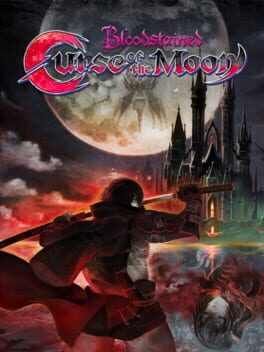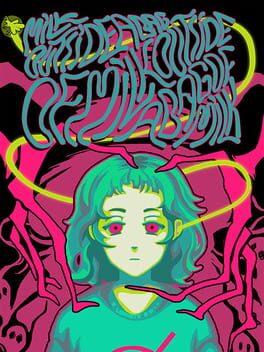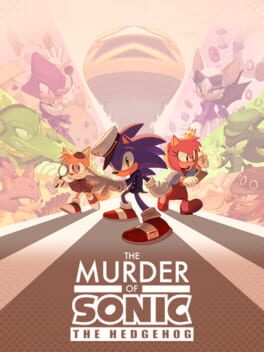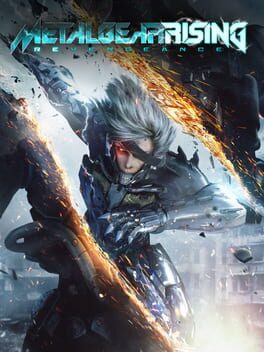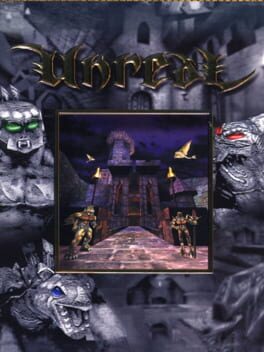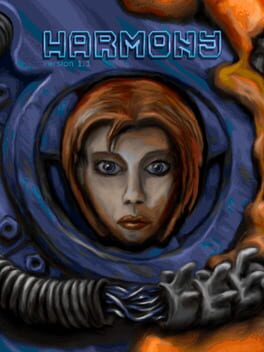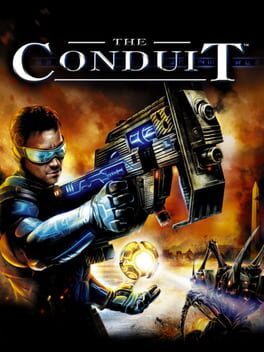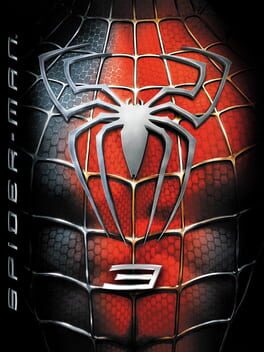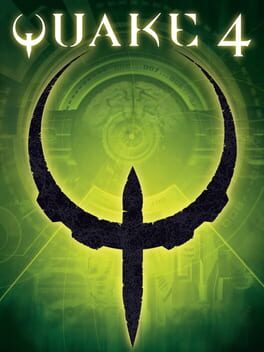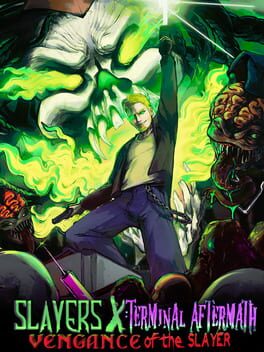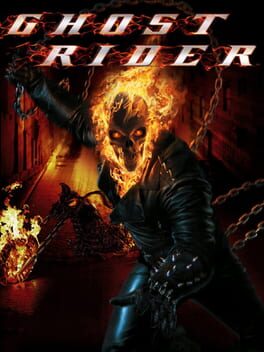iv1632
Another remarkable remaster from Nightdive, but I really want to commend NewBlood for their contributions as well. NewBlood focused on restoring the cut enemies, putting together the new episode and working on QoL features like the extra HUD, which really elevates this remaster as an ultimate edition.
The new episode is great if you're into ROTT's brand of level design and uses some more advanced features as well as taking advantage of the verticality that's possible with the jump pads and platforms of the game. I am surprised at how flexible KEX is sometimes, everything in this feels right, from the rendering to the movement. I don't love ROTT nearly as much as other people do but asides from a near complete overhaul like the Quake II remaster, which I feel like would just mess up the personality of this game, there's nothing more I could ask from this.
It's true that nobody loves ROTT more than NewBlood and Nightdive and I'm really glad they're the ones who got their hands on this after it got taken away from 3DR, if you're a fan you can't miss this release. Not completed cause I'm not playing Extreme ROTT.
The new episode is great if you're into ROTT's brand of level design and uses some more advanced features as well as taking advantage of the verticality that's possible with the jump pads and platforms of the game. I am surprised at how flexible KEX is sometimes, everything in this feels right, from the rendering to the movement. I don't love ROTT nearly as much as other people do but asides from a near complete overhaul like the Quake II remaster, which I feel like would just mess up the personality of this game, there's nothing more I could ask from this.
It's true that nobody loves ROTT more than NewBlood and Nightdive and I'm really glad they're the ones who got their hands on this after it got taken away from 3DR, if you're a fan you can't miss this release. Not completed cause I'm not playing Extreme ROTT.
Does exactly what it sets out to do: redesign the map, rebalance some items and make progression flow better.
Progression in both exploration and power feels much more satisfying, hunting for more rooms and items never stopped being fun and I tried to do as much as possible before actually finishing the game.
A new challenge area is added and it's known as the Death Arena. It's a series of rooms full of enemies that are much stronger and you can't use souls, but once you get good equipment it becomes more doable, it is a good challenge if you found the game needed a tougher area. Has a reward too of course, I also managed to get a fair amount of souls while at it.
Only complaint I would have is that while a lot of souls are indeed easier to get, drop rates for many can still be abysmal even with the soul eater ring, however it's still much better than the original game in this regard at the very least.
I definitely recommend this if you want a new way to play Aria of Sorrow without changing too much of the gameplay itself, it's very fun to explore the new map and try out the smaller changes.
Progression in both exploration and power feels much more satisfying, hunting for more rooms and items never stopped being fun and I tried to do as much as possible before actually finishing the game.
A new challenge area is added and it's known as the Death Arena. It's a series of rooms full of enemies that are much stronger and you can't use souls, but once you get good equipment it becomes more doable, it is a good challenge if you found the game needed a tougher area. Has a reward too of course, I also managed to get a fair amount of souls while at it.
Only complaint I would have is that while a lot of souls are indeed easier to get, drop rates for many can still be abysmal even with the soul eater ring, however it's still much better than the original game in this regard at the very least.
I definitely recommend this if you want a new way to play Aria of Sorrow without changing too much of the gameplay itself, it's very fun to explore the new map and try out the smaller changes.
Honestly great game! This is a game that takes the most solid elements from Castlevania III and runs with them without making a daunting experience.
Visuals have great detail without going to the point of not feeling authentic to an NES, although it obviously wouldn't run this game, but it's a nice look, same can be said for the music even if it never really reaches the height of any of the iconic Castlevania soundtracks.
Level design is non linear with different paths each level and even ties into the different characters, as you progress the first few levels you can recruit new characters to play as and each one has different abilities. Zengetsu has a short sword and not very versatile movement but carries a lot of health, Miriam can jump higher and do a ground dash to reach some extra areas as well as carrying a long range whip like a Belmont would, Gebel is a vampire that can turn into a bat and fly for the same purpose, and Alfred is an alchemist that gets subweapons that aren't usually great for direct combat but are good utilities. Each character has different levels of strengh and HP as well as being necessary to access some of the different areas around levels or to find secrets, and with the different paths available you can explore a lot.
You can also choose not to recruit any characters, or kill them to upgrade Zengetsu's abilities, there's a fair bit of experimentation to be done with the game like this and it fundamentally changes how you play which is really cool to see.
Dying doesn't immediately makes you lose a life as it instead makes you lose the character that lost all HP temporarily, so you can get some progress before reaching a checkpoint and recovering your characters by losing a life, which can be a decent strategy to get through the levels. Exploring can lead you to upgrades for all characters (more mana for subweapons, more health) or even easier sections to reach the end quicker. Challenge ramps up very well and never gets unfair during the main game, although in Nightmare mode I'm not sure of how you're supposed to dodge some attacks but I'm also slow.
When it comes to modernization, the controls are just outright better than the classic Castlevanias and the life system works in your favor, there's also an easier mode with infinite lives and without damage knockback, which is in my opinion a little too much as I feel like infinite lives would have been enough, but a lot of people have seemingly enjoyed playing through that mode and it's fine for quickly getting through the game.
While the game is short there's a lot to explore and the unlockable Nightmare mode very much encourages it, and as it is just more tightly designed than the classic CV games from controls to level design, it just surpasses them. Sure, it's a game that doesn't do much new in this sense, but executing a formula extremely well and being more fun than its predecessors should be enough for it to be worth your time.
Visuals have great detail without going to the point of not feeling authentic to an NES, although it obviously wouldn't run this game, but it's a nice look, same can be said for the music even if it never really reaches the height of any of the iconic Castlevania soundtracks.
Level design is non linear with different paths each level and even ties into the different characters, as you progress the first few levels you can recruit new characters to play as and each one has different abilities. Zengetsu has a short sword and not very versatile movement but carries a lot of health, Miriam can jump higher and do a ground dash to reach some extra areas as well as carrying a long range whip like a Belmont would, Gebel is a vampire that can turn into a bat and fly for the same purpose, and Alfred is an alchemist that gets subweapons that aren't usually great for direct combat but are good utilities. Each character has different levels of strengh and HP as well as being necessary to access some of the different areas around levels or to find secrets, and with the different paths available you can explore a lot.
You can also choose not to recruit any characters, or kill them to upgrade Zengetsu's abilities, there's a fair bit of experimentation to be done with the game like this and it fundamentally changes how you play which is really cool to see.
Dying doesn't immediately makes you lose a life as it instead makes you lose the character that lost all HP temporarily, so you can get some progress before reaching a checkpoint and recovering your characters by losing a life, which can be a decent strategy to get through the levels. Exploring can lead you to upgrades for all characters (more mana for subweapons, more health) or even easier sections to reach the end quicker. Challenge ramps up very well and never gets unfair during the main game, although in Nightmare mode I'm not sure of how you're supposed to dodge some attacks but I'm also slow.
When it comes to modernization, the controls are just outright better than the classic Castlevanias and the life system works in your favor, there's also an easier mode with infinite lives and without damage knockback, which is in my opinion a little too much as I feel like infinite lives would have been enough, but a lot of people have seemingly enjoyed playing through that mode and it's fine for quickly getting through the game.
While the game is short there's a lot to explore and the unlockable Nightmare mode very much encourages it, and as it is just more tightly designed than the classic CV games from controls to level design, it just surpasses them. Sure, it's a game that doesn't do much new in this sense, but executing a formula extremely well and being more fun than its predecessors should be enough for it to be worth your time.
Who would've thought the best Sonic game of the early 2020s would be an April Fools joke? It really felt like running into an outlandish situation that's normal for the characters but as an outsider, really fun and cute, way too high effort for what it is.
It's the kind of thing you find on itch.io except published by a big company, and I am saying that as a compliment!
It's the kind of thing you find on itch.io except published by a big company, and I am saying that as a compliment!
Yet another game to add to my list of favorites and best ever. This case is kind of strange because this game really isn't perfect, the stealth barely works (it's luckily optional, different focus) and the VR missions are probably just really unnecessary to the game, but the joy you get when playing through it is simply worth it.
The QTEs are prominent but not too annoying, they're usually satisfying and I think this game should be the example for it instead of RE4, except for those QTEs where you wiggle the stick left and right because they're the most inconsistent. Also, the cutting mechanic has many uses during combat alongside your combos so that you can always strive to get better at it.
The music pumps, you learn to get more efficient while playing, you become faster and then by the time you realize it you're playing the game again. It is very short, about 5 to 6 hours, but they can be played again with satisfaction many times.
The story is actually clever, I have issues with Raiden's character and some of the dialogue, but following up on MGS4 and not being a mess is definitely more than an accomplishment. Not to mention, the villains you fight are all written really well for what they are, you can extrapolate a lot of their ideas if you look beyond the memes.
I was led to believe the final boss would be a festival of QTEs and cutscenes but it ended up mixing in gameplay very well and it forced me to do better combos, the finale was just extremely satisfying and I'm on my way to do it again just because it's fun.
Really I could go on all day about how the combat works, but it's better if you just play it, do it if you haven't.
The QTEs are prominent but not too annoying, they're usually satisfying and I think this game should be the example for it instead of RE4, except for those QTEs where you wiggle the stick left and right because they're the most inconsistent. Also, the cutting mechanic has many uses during combat alongside your combos so that you can always strive to get better at it.
The music pumps, you learn to get more efficient while playing, you become faster and then by the time you realize it you're playing the game again. It is very short, about 5 to 6 hours, but they can be played again with satisfaction many times.
The story is actually clever, I have issues with Raiden's character and some of the dialogue, but following up on MGS4 and not being a mess is definitely more than an accomplishment. Not to mention, the villains you fight are all written really well for what they are, you can extrapolate a lot of their ideas if you look beyond the memes.
I was led to believe the final boss would be a festival of QTEs and cutscenes but it ended up mixing in gameplay very well and it forced me to do better combos, the finale was just extremely satisfying and I'm on my way to do it again just because it's fun.
Really I could go on all day about how the combat works, but it's better if you just play it, do it if you haven't.
1998
This was a surprising game for me in many ways. The game starts out in a decently atmospheric intro level where you find yourself escaping a crashed prison spaceship, lacking weapons, can read logs and notes from all the dead people and abandoned computers around you and get the chance to pick up the pieces to get some context for the story. Eventually when stepping out into the planet, the gigantic scale of the map, the ambient sounds coming from the animals and environment and the sense of exploration were incredible.
Many maps in this game have an incredible scale for 1998, and even when things are crude, a lot of thought goes into the world building be it through readable logs or simply environmental details. You could call the visuals outdated, but I find that they're artistically used very well to convey the environment so that I could keep myself immersed even when details are lacking, especially thanks to some great use of lighting effects. Some of the scenes visible in this game are simply unbelievable to me and I can't imagine what seeing them in a period accurate PC at the time would have been like.
Combat is certainly an aspect that will put a lot of people off, they focused on building an AI system that would give enemies the ability to navigate maps extensively, dodge your attacks and even have some types use a variety of weapons. I'm guessing that due to optimization, they kept combat spaces to very few enemies at a time which does mean enemies are designed around being a bit tanky so you often have a dynamic 1v1 encounter. When it works it's pretty fine, if a bit slower paced than other games in the genre at the time, but when it doesn't work it feels like enemies are either always dodging or getting lost, with the level design in later areas not helping much as it gets more mazey.
And this is where the game fell out of legendary status for me, the jank felt pretty justifiable given its age and how much it accomplished at the time a mere 5 months after Quake II had tried to do a lot of it and didn't quite reach, but the final 2 chapters are extremely tedious. Level design goes from trying to immerse into big open maps that lead you to smaller places you can explore to being very mazey and in some cases a messy kind of symmetrical, with very strange design choices like waiting for 2 enemies to constantly spawn after being killed until they spawn behind a door, with no indication, so that door finally opens and you can proceed. Already I felt like the game was simply stretching thin before this as it ran out of weapons and enemies to introduce, but the final chapter had me WISHING the game ended in every single map I had to go through. It didn't help that boss fights are the typical FPS trope of shoot at it until it dies.
I don't mind Half-Life Xen as much as other people do, I find it kinda boring but not frustrating. The final chapter of Unreal was frustating for me, not because it had weird gravity gimmicks or because I died much or anything of the sort, but because the levels and enemy encounters were really unengaging and uninteresting at that point. As even story logs became rare, I felt like the game should have ended 2 or 3 hours ago already. I do not think getting bang for your buck in game length is worth it if the game isn't offering more fun, just more filler. At the very least Xen was filled with interesting ideas and Half-Life wasn't as long.
Still with the problems I had at the end I'm very glad I played this, I still find it an impressive title full of memorable places to explore and a surprisingly thought out world. I just wish it wasn't stretched so much at the end, but regardless, it is a good game and it's a shame that Epic cannot see it for what it is and would rather delist it because they refuse to provide support the community is more than happy to do for them, even while being unpaid.
Many maps in this game have an incredible scale for 1998, and even when things are crude, a lot of thought goes into the world building be it through readable logs or simply environmental details. You could call the visuals outdated, but I find that they're artistically used very well to convey the environment so that I could keep myself immersed even when details are lacking, especially thanks to some great use of lighting effects. Some of the scenes visible in this game are simply unbelievable to me and I can't imagine what seeing them in a period accurate PC at the time would have been like.
Combat is certainly an aspect that will put a lot of people off, they focused on building an AI system that would give enemies the ability to navigate maps extensively, dodge your attacks and even have some types use a variety of weapons. I'm guessing that due to optimization, they kept combat spaces to very few enemies at a time which does mean enemies are designed around being a bit tanky so you often have a dynamic 1v1 encounter. When it works it's pretty fine, if a bit slower paced than other games in the genre at the time, but when it doesn't work it feels like enemies are either always dodging or getting lost, with the level design in later areas not helping much as it gets more mazey.
And this is where the game fell out of legendary status for me, the jank felt pretty justifiable given its age and how much it accomplished at the time a mere 5 months after Quake II had tried to do a lot of it and didn't quite reach, but the final 2 chapters are extremely tedious. Level design goes from trying to immerse into big open maps that lead you to smaller places you can explore to being very mazey and in some cases a messy kind of symmetrical, with very strange design choices like waiting for 2 enemies to constantly spawn after being killed until they spawn behind a door, with no indication, so that door finally opens and you can proceed. Already I felt like the game was simply stretching thin before this as it ran out of weapons and enemies to introduce, but the final chapter had me WISHING the game ended in every single map I had to go through. It didn't help that boss fights are the typical FPS trope of shoot at it until it dies.
I don't mind Half-Life Xen as much as other people do, I find it kinda boring but not frustrating. The final chapter of Unreal was frustating for me, not because it had weird gravity gimmicks or because I died much or anything of the sort, but because the levels and enemy encounters were really unengaging and uninteresting at that point. As even story logs became rare, I felt like the game should have ended 2 or 3 hours ago already. I do not think getting bang for your buck in game length is worth it if the game isn't offering more fun, just more filler. At the very least Xen was filled with interesting ideas and Half-Life wasn't as long.
Still with the problems I had at the end I'm very glad I played this, I still find it an impressive title full of memorable places to explore and a surprisingly thought out world. I just wish it wasn't stretched so much at the end, but regardless, it is a good game and it's a shame that Epic cannot see it for what it is and would rather delist it because they refuse to provide support the community is more than happy to do for them, even while being unpaid.
Brilliant game, it's the most inventive Castlevania since the likes of Simon's Quest (credit for trying), Rondo of Blood, Symphony of the Night and Aria of Sorrow. Every element here feels like an evolution of what you've found on previous games while standing on its own with a solid foundation.
First off, the anime style is gone and now we get artwork and character design by Masaki Hirooka. Not Ayami Kojima, yeah, but the artwork is really well done and fits Castlevania. This is aided by great presentation in the story. Don't get me wrong, it's extremely predictable, but the presentation overall doesn't make me uncomfortable anymore while still having silly elements to it, like cryptid hunting. Also Shanoa is up there as one of the best Castlevania protagonists.
Glyphs are a great followup to the soul system from the Sorrow games, now we have 3 different glyph sets to start with and instead of giving every enemy a collectible glyph, they focused on making a smaller amount of them that can be given more importance. Mixing different types creates Glyph Unions, which are special attacks, and using the right ones can make the difference in boss fights. Attacking is also recontextualized once more, as the MP bar is used by your regular attacks so you can't just spam them, but you can combo between 2 weapons (equipping on each hand is back!) and hearts are used by Glyph Unions. This system is compared to the Souls games by some, and I definitely see where they come from, but this game came firstand also it is better.
The map system feels oddly natural after Portrait of Ruin. Instead of starting in Castlevania, we get to explore a bunch of loose areas that we access from an overworld map, with new ones unlocking after completing another. A few of them are unfortunately little more than a corridor, but they all have a different theme and are worth exploring depending on what item/glyph/monster you're looking for. We still get a Castle section, but it feels more like a proper fully featured Castle than in Portrait of Ruin.
Side quests evolved into them being given by different NPCs across a village which may as well be called your HQ, where completing them unlocks more items available in the shop if not a direct reward. A few of them are unfortunately tedious fetch quests, but luckily aren't required and I still found value in doing them when I was looking to take a break from exploring the final area. I didn't complete all of them though because it's not something I usually do, but I got close.
In terms of difficulty there is a big jump at the end, but there is a detail which is made way more important in this game. Never before has attacking with different types be this effective and you should really investigate what equipment works best against bosses, as well as get good at dodging their attacks as your focus to survive should usually be on your movement.
The final fight with Dracula was deceptively hard but it has great payoff, not necessarily because the ending is great, but because it felt like beating him in the original Castlevania (well maybe that one was kinda bs). Super tough, takes long, but failing is not due to having bad stats (unless maybe you're hurrying through this game) as there is space for you to do well, it's all about practice.
Overall I loved this game, for what it's doing as a first attempt and also polishing up what has been built since SOTN I can't imagine it getting things more right at the time. If the side quests were less annoying to complete and the areas that are just corridors got expanded on, this could very well be a perfect game. It's very sad that Konami didn't allow the franchise to keep going in this direction, but from the little I've seen of Ritual of the Night Miriam is basically Shanoa 2 so I'm glad it is having some influence out there.
First off, the anime style is gone and now we get artwork and character design by Masaki Hirooka. Not Ayami Kojima, yeah, but the artwork is really well done and fits Castlevania. This is aided by great presentation in the story. Don't get me wrong, it's extremely predictable, but the presentation overall doesn't make me uncomfortable anymore while still having silly elements to it, like cryptid hunting. Also Shanoa is up there as one of the best Castlevania protagonists.
Glyphs are a great followup to the soul system from the Sorrow games, now we have 3 different glyph sets to start with and instead of giving every enemy a collectible glyph, they focused on making a smaller amount of them that can be given more importance. Mixing different types creates Glyph Unions, which are special attacks, and using the right ones can make the difference in boss fights. Attacking is also recontextualized once more, as the MP bar is used by your regular attacks so you can't just spam them, but you can combo between 2 weapons (equipping on each hand is back!) and hearts are used by Glyph Unions. This system is compared to the Souls games by some, and I definitely see where they come from, but this game came first
The map system feels oddly natural after Portrait of Ruin. Instead of starting in Castlevania, we get to explore a bunch of loose areas that we access from an overworld map, with new ones unlocking after completing another. A few of them are unfortunately little more than a corridor, but they all have a different theme and are worth exploring depending on what item/glyph/monster you're looking for. We still get a Castle section, but it feels more like a proper fully featured Castle than in Portrait of Ruin.
Side quests evolved into them being given by different NPCs across a village which may as well be called your HQ, where completing them unlocks more items available in the shop if not a direct reward. A few of them are unfortunately tedious fetch quests, but luckily aren't required and I still found value in doing them when I was looking to take a break from exploring the final area. I didn't complete all of them though because it's not something I usually do, but I got close.
In terms of difficulty there is a big jump at the end, but there is a detail which is made way more important in this game. Never before has attacking with different types be this effective and you should really investigate what equipment works best against bosses, as well as get good at dodging their attacks as your focus to survive should usually be on your movement.
The final fight with Dracula was deceptively hard but it has great payoff, not necessarily because the ending is great, but because it felt like beating him in the original Castlevania (well maybe that one was kinda bs). Super tough, takes long, but failing is not due to having bad stats (unless maybe you're hurrying through this game) as there is space for you to do well, it's all about practice.
Overall I loved this game, for what it's doing as a first attempt and also polishing up what has been built since SOTN I can't imagine it getting things more right at the time. If the side quests were less annoying to complete and the areas that are just corridors got expanded on, this could very well be a perfect game. It's very sad that Konami didn't allow the franchise to keep going in this direction, but from the little I've seen of Ritual of the Night Miriam is basically Shanoa 2 so I'm glad it is having some influence out there.
2009
Good time, this is a standalone game running on ZDoom, but I just played it on the DOOM Unity port re-release.
The visuals have a nice charm to them and the maps are filled with "doomcute" and pleasant architecture, the architecture isn't overly detailed which I actually dig because it manages to look good and make convincing places without filling the map with lots of lines.
Enemies and weapons only slightly behave differently than in DOOM, but there's no SSG and the low tier enemies are slightly tankier and drop less ammo, you also can't carry as much ammo as you can in DOOM so I ended up playing more cautiously than usual, but the difficulty still isn't very tough.
Map 6 was really annoying, filled with this game's equivalent of the Cyberdemon and not much ammo to go around, I ended up rushing for the exit, most of the other maps also still get pretty mazey, but luckily the last few maps aren't so by much.
The re-release adds 3 new maps, 2 for gameplay and 1 for credits. These last 2 maps ended up being the most enjoyable for me as they had a couple of larger scale fights and added a flying enemy which forced me to move more. Asides from the maps, the re-release has a new music pack all in MIDI, all levels have a corresponding music track now while the original game only had 3 tracks which wasn't ideal for having 11 maps.
Overall the gameplay is pretty average, but the visuals look charming and playing through this only takes roughly an hour, I enjoyed it in some short bursts throughout 3 days. If this game looks interesting to you then you should play it, even if just to enjoy the visuals.
The visuals have a nice charm to them and the maps are filled with "doomcute" and pleasant architecture, the architecture isn't overly detailed which I actually dig because it manages to look good and make convincing places without filling the map with lots of lines.
Enemies and weapons only slightly behave differently than in DOOM, but there's no SSG and the low tier enemies are slightly tankier and drop less ammo, you also can't carry as much ammo as you can in DOOM so I ended up playing more cautiously than usual, but the difficulty still isn't very tough.
Map 6 was really annoying, filled with this game's equivalent of the Cyberdemon and not much ammo to go around, I ended up rushing for the exit, most of the other maps also still get pretty mazey, but luckily the last few maps aren't so by much.
The re-release adds 3 new maps, 2 for gameplay and 1 for credits. These last 2 maps ended up being the most enjoyable for me as they had a couple of larger scale fights and added a flying enemy which forced me to move more. Asides from the maps, the re-release has a new music pack all in MIDI, all levels have a corresponding music track now while the original game only had 3 tracks which wasn't ideal for having 11 maps.
Overall the gameplay is pretty average, but the visuals look charming and playing through this only takes roughly an hour, I enjoyed it in some short bursts throughout 3 days. If this game looks interesting to you then you should play it, even if just to enjoy the visuals.
2009
One of those solid 6 games, it's fairly enjoyable despite being extremely generic with a boring plot. The Wii controls are great, much better than what I've seen from Call of Duty and GoldenEye, they're the highlight of the experience along with the weapons and impressive visuals.
Recommend it to those curious about it, worth at least the novelty of "hardcore third party Wii exclusive".
Recommend it to those curious about it, worth at least the novelty of "hardcore third party Wii exclusive".
2007
2005
A few days ago I was looking at the Quake games on Steam and realized something: I had not only not played Q4 since I was very young and I also happened to remember pretty much none of it, not even that much of the cutscene everyone knows this for. I was in the mood for something quick to play so I installed it and gave it another go.
From the beginning this game gives off DOOM 3 vibes more than anything, except the horror atmosphere isn't the focus, guns feel punchier and action is almost immediate.
Already an hour in I was feeling like this game was utilizing the idtech 4 engine way better, as it had a lot of pretty lighting in detailed areas with rich textures, but without making things overly dark and also making levels more fast paced. Sure, the initial walking speed is a bit annoyingly slow, but the levels are designed in such a way that I never felt too slow even while backtracking.
I think there's something to be said about the presentation of this game, the story continues right from the ending of Quake II and follows a silent protagonist alongside a squad of veteran soldiers. None of the characters are very deep or noteworthy, but they have some good voice work and the showing of different squads advancing through Stroggos in coordinated assaults gives a more natural tone of war that was absent in Quake II. The Strogg are designed in more interesting ways as well, giving us new foes with gruesome character design and a bunch of returning enemies a new spin, like the Berserkers having lighting attacks or the Iron Maidens being able to teleport and float. In general enemies use a wider variety of weapons as well, making them less monotonous when encountering the same enemy type. Unfortunately the Strogg still look too human like to my liking, with not many indications of them really being a galactic civilization that existed away from humans for a long time, but that problem is inherited from Quake II and not a particular issue with this game.
Unfortunately the AI isn't all that great, enemies have pretty predictable behaviors and ally squad members aren't always good at following you or finding a good spot, however levels are also designed well enough around this and will rarely show these weaknesses to a big degree.
Speaking of ally squad members, they're honestly nice to have around but aren't too much of a big deal. They do mostly stay alive without your supervision but can still die so it's a bad idea to let big enemies get a hold of them. A few sections with them are actually tricky to manage while trying to keep everyone alive which I welcome. They'll also provide you with weapon upgrades throughout the game, a system that's very clearly a last minute addition but helps the pacing as you get new reasons to use your weapons.
Weapons themselves all feel great, they all are good options during firefights and can still serve different roles. Of note are the lighting gun and nail gun which return, redesigned, from the first Quake game and the very versatile assault rifle and shotgun. Disappointingly the rail gun requires an upgrade to pierce enemies and the SSG is not here, but the arsenal is very robust and feels powerful which is what matters.
Going on, the game has a big moment in the middle which we all know as the Stroggification scene. I am not as impacted by it as others, but getting turned gives you a boost to player speed, health and armor. After this the game really picks up and gets more confident in throwing big enemies in higher numbers at you, which creates a lot of intense combat arenas that are very fun to get through.
The only points in which the pacing of the game is really bogged down is by the vehicle sections. I don't find them frustrating at all and at moments they're a good show, but they feel completely unnecessary and I would not miss them if they were cut. Polishing up the weapon upgrade system or getting more enemy variety could have been a better use of resources than the vehicles, but still, they're at least over quickly and I don't find them to ruin the game.
The final stretch of the game is the most fast paced and action heavy part and I really love it, it feels like the Strogg are giving way too much attention to you as an individual due to how much you're foiling their plans and it's great. The final boss is a pushover just like with Quake II, but at least it's harder to cheese as you can't just pop out a Quad Damage and Invulnerability to get through it quick.
Overall it's a pretty polished game that doesn't feel like it wastes my time. Despite being very derivative of Quake II and DOOM 3 I think it does a bunch of things better than those, particularly just being way better at pacing than DOOM 3 ever was, and is overall a very polished experience. It's maybe not one of the greats or as historically significant but it's still a good time and it has aged very well. Take it from someone that has a lot of nostalgia for Halo: it does not at all feel like Halo or CoD as some say, it really just feels like something that would naturally come after DOOM 3 mixed in with Quake II and I enjoy that a fair bit.
From the beginning this game gives off DOOM 3 vibes more than anything, except the horror atmosphere isn't the focus, guns feel punchier and action is almost immediate.
Already an hour in I was feeling like this game was utilizing the idtech 4 engine way better, as it had a lot of pretty lighting in detailed areas with rich textures, but without making things overly dark and also making levels more fast paced. Sure, the initial walking speed is a bit annoyingly slow, but the levels are designed in such a way that I never felt too slow even while backtracking.
I think there's something to be said about the presentation of this game, the story continues right from the ending of Quake II and follows a silent protagonist alongside a squad of veteran soldiers. None of the characters are very deep or noteworthy, but they have some good voice work and the showing of different squads advancing through Stroggos in coordinated assaults gives a more natural tone of war that was absent in Quake II. The Strogg are designed in more interesting ways as well, giving us new foes with gruesome character design and a bunch of returning enemies a new spin, like the Berserkers having lighting attacks or the Iron Maidens being able to teleport and float. In general enemies use a wider variety of weapons as well, making them less monotonous when encountering the same enemy type. Unfortunately the Strogg still look too human like to my liking, with not many indications of them really being a galactic civilization that existed away from humans for a long time, but that problem is inherited from Quake II and not a particular issue with this game.
Unfortunately the AI isn't all that great, enemies have pretty predictable behaviors and ally squad members aren't always good at following you or finding a good spot, however levels are also designed well enough around this and will rarely show these weaknesses to a big degree.
Speaking of ally squad members, they're honestly nice to have around but aren't too much of a big deal. They do mostly stay alive without your supervision but can still die so it's a bad idea to let big enemies get a hold of them. A few sections with them are actually tricky to manage while trying to keep everyone alive which I welcome. They'll also provide you with weapon upgrades throughout the game, a system that's very clearly a last minute addition but helps the pacing as you get new reasons to use your weapons.
Weapons themselves all feel great, they all are good options during firefights and can still serve different roles. Of note are the lighting gun and nail gun which return, redesigned, from the first Quake game and the very versatile assault rifle and shotgun. Disappointingly the rail gun requires an upgrade to pierce enemies and the SSG is not here, but the arsenal is very robust and feels powerful which is what matters.
Going on, the game has a big moment in the middle which we all know as the Stroggification scene. I am not as impacted by it as others, but getting turned gives you a boost to player speed, health and armor. After this the game really picks up and gets more confident in throwing big enemies in higher numbers at you, which creates a lot of intense combat arenas that are very fun to get through.
The only points in which the pacing of the game is really bogged down is by the vehicle sections. I don't find them frustrating at all and at moments they're a good show, but they feel completely unnecessary and I would not miss them if they were cut. Polishing up the weapon upgrade system or getting more enemy variety could have been a better use of resources than the vehicles, but still, they're at least over quickly and I don't find them to ruin the game.
The final stretch of the game is the most fast paced and action heavy part and I really love it, it feels like the Strogg are giving way too much attention to you as an individual due to how much you're foiling their plans and it's great. The final boss is a pushover just like with Quake II, but at least it's harder to cheese as you can't just pop out a Quad Damage and Invulnerability to get through it quick.
Overall it's a pretty polished game that doesn't feel like it wastes my time. Despite being very derivative of Quake II and DOOM 3 I think it does a bunch of things better than those, particularly just being way better at pacing than DOOM 3 ever was, and is overall a very polished experience. It's maybe not one of the greats or as historically significant but it's still a good time and it has aged very well. Take it from someone that has a lot of nostalgia for Halo: it does not at all feel like Halo or CoD as some say, it really just feels like something that would naturally come after DOOM 3 mixed in with Quake II and I enjoy that a fair bit.
2007
A flawed, yet cathartic, gem.
I'll start by saying that I haven't watched Hard Boiled and am mainly familiar with John Woo through cultural osmosis and some movie clips, so I won't be commenting on how the story works as a sequel to Hard Boiled, but it doesn't have any returning characters asides from the lead if you care about that. Also not touching on the multiplayer cause it's dead.
This game is the result of a development studio working under a sinking publisher trying to translate the "gung fu" style popularized by director Woo, and previously partially represented in videogames by Max Payne, into an interactive spectacle. It's probably easy to say that this is a Max Payne rip-off, but with the little I've seen of the director's movies, I think this game was going to end up playing like this regardless of if Max Payne had done it first or not.
So what is this really like in practice? Well, there's some problems. A lot of the actions in this game, in terms of movement, are either automated or guided. You automatically vault over low height objects like tables, and things like jumping on rails or taking a zip line down only work when the game thinks you're in position and highlights the point at which the action starts, where you're supposed to press the jump button. Another thing that's automated is the slow motion Bullet Time, here named Tequila Time, which will automatically kick in during acrobatics or when aiming under cover as long as you have some Tequila juice filled in the bar.
The way I described those things may even sound really bad, but the interesthing thing about this game is that once the level design clicks in, it all works. Instead of always being a linear affair where you're pushing forward through small groups of enemies, often in corridors, like in Max Payne, Strangehold will throw you into combat arenas filled with cover, jumping points, usually two floors and many entries for dozens of enemies to ambush you. It's in these moments where you're improvising where to jump to, seeing your bullet time kick in, stacking up combos with kills as you take cover, jump and vault around where the game shines.
The developers worked on the engine to get some of the most impressive destructible environments you'll ever see. So many objects can be destroyed, enemies come at you from all angles, the walls get chipped away by bullets often losing you your cover and you must keep that murder momentum going to fill up your Tequila Powers to use Tequila Bombs. The Tequila Bombs are special abilities that require you to kill enemies to fill their bar, and they're all useful in some way. First you can heal, then you get to use a precision shot, followed by the ability to get 30 seconds of invulnerability paired with unlimited ammo, and finally, a sweeping circle shot move that kills every enemy in the area. In later levels, the game will be throwing you so many enemies that you will need these in nearly every fight to survive, and so keeping your meter up to have a reserve of powers at your disposal compliments the otherwise basic gunplay.
Unfortunately, this game falters in the pacing and variety department. We have what's called "standoffs" which are basically shooting QTEs where you stand in place and must dodge slow moving bullets making sure you hit the target. The standoffs are pretty clunky, and will often lose you health no matter what you do, luckily we barely have a few of them throughout the game. The other part where they drop the ball hard is in the second level, a linear affair where you must tick off objective targets to destroy to progress and it closes off with an overly long and mindless turret section. It creates a terrible impression of the game after the decent first level that actually had a cool combat arena, but luckily the game never falters like that again. It's just unfortunate that in trying to create variety, they simply kill the pace.
But all in all, this game is extremely cathartic. Played for 4 hours and 49 minutes to see the end, so it wasn't longer than it needed to be considering that shooting is all it has, and seeing my stats of how many people I killed and property damaged I caused in that time was great. After you finish up a fight, you leave behind an incredible trail of destruction as a result of all those bullets and explosions you used to survive. There's no other game quite like this that I know of, which is why I'm willing to overlook the flaws in favor of just taking it all in and enjoying it.
We need more like this, this is a great attempt at translating an action movie over to video-game form and another game that can work out the issues it had, led by a developer with more resources to work with, would simply be perfection under the right circumstances. The game is up for purchase on GOG and it's practically given away during sales, I really recommend checking it out if it looks cool to you at all.
I'll start by saying that I haven't watched Hard Boiled and am mainly familiar with John Woo through cultural osmosis and some movie clips, so I won't be commenting on how the story works as a sequel to Hard Boiled, but it doesn't have any returning characters asides from the lead if you care about that. Also not touching on the multiplayer cause it's dead.
This game is the result of a development studio working under a sinking publisher trying to translate the "gung fu" style popularized by director Woo, and previously partially represented in videogames by Max Payne, into an interactive spectacle. It's probably easy to say that this is a Max Payne rip-off, but with the little I've seen of the director's movies, I think this game was going to end up playing like this regardless of if Max Payne had done it first or not.
So what is this really like in practice? Well, there's some problems. A lot of the actions in this game, in terms of movement, are either automated or guided. You automatically vault over low height objects like tables, and things like jumping on rails or taking a zip line down only work when the game thinks you're in position and highlights the point at which the action starts, where you're supposed to press the jump button. Another thing that's automated is the slow motion Bullet Time, here named Tequila Time, which will automatically kick in during acrobatics or when aiming under cover as long as you have some Tequila juice filled in the bar.
The way I described those things may even sound really bad, but the interesthing thing about this game is that once the level design clicks in, it all works. Instead of always being a linear affair where you're pushing forward through small groups of enemies, often in corridors, like in Max Payne, Strangehold will throw you into combat arenas filled with cover, jumping points, usually two floors and many entries for dozens of enemies to ambush you. It's in these moments where you're improvising where to jump to, seeing your bullet time kick in, stacking up combos with kills as you take cover, jump and vault around where the game shines.
The developers worked on the engine to get some of the most impressive destructible environments you'll ever see. So many objects can be destroyed, enemies come at you from all angles, the walls get chipped away by bullets often losing you your cover and you must keep that murder momentum going to fill up your Tequila Powers to use Tequila Bombs. The Tequila Bombs are special abilities that require you to kill enemies to fill their bar, and they're all useful in some way. First you can heal, then you get to use a precision shot, followed by the ability to get 30 seconds of invulnerability paired with unlimited ammo, and finally, a sweeping circle shot move that kills every enemy in the area. In later levels, the game will be throwing you so many enemies that you will need these in nearly every fight to survive, and so keeping your meter up to have a reserve of powers at your disposal compliments the otherwise basic gunplay.
Unfortunately, this game falters in the pacing and variety department. We have what's called "standoffs" which are basically shooting QTEs where you stand in place and must dodge slow moving bullets making sure you hit the target. The standoffs are pretty clunky, and will often lose you health no matter what you do, luckily we barely have a few of them throughout the game. The other part where they drop the ball hard is in the second level, a linear affair where you must tick off objective targets to destroy to progress and it closes off with an overly long and mindless turret section. It creates a terrible impression of the game after the decent first level that actually had a cool combat arena, but luckily the game never falters like that again. It's just unfortunate that in trying to create variety, they simply kill the pace.
But all in all, this game is extremely cathartic. Played for 4 hours and 49 minutes to see the end, so it wasn't longer than it needed to be considering that shooting is all it has, and seeing my stats of how many people I killed and property damaged I caused in that time was great. After you finish up a fight, you leave behind an incredible trail of destruction as a result of all those bullets and explosions you used to survive. There's no other game quite like this that I know of, which is why I'm willing to overlook the flaws in favor of just taking it all in and enjoying it.
We need more like this, this is a great attempt at translating an action movie over to video-game form and another game that can work out the issues it had, led by a developer with more resources to work with, would simply be perfection under the right circumstances. The game is up for purchase on GOG and it's practically given away during sales, I really recommend checking it out if it looks cool to you at all.
2007
Got exactly what I wanted out of this game: Short but polished fun.
It looks and runs great, has a satisfying moveset, varied environments and enemies and it doesn't waste your time. High quality game that could have used a higher budget and some more time, but pretty good as it is. I don't care if it's derivative, it does Devil May Cry x God of War well.
It looks and runs great, has a satisfying moveset, varied environments and enemies and it doesn't waste your time. High quality game that could have used a higher budget and some more time, but pretty good as it is. I don't care if it's derivative, it does Devil May Cry x God of War well.


